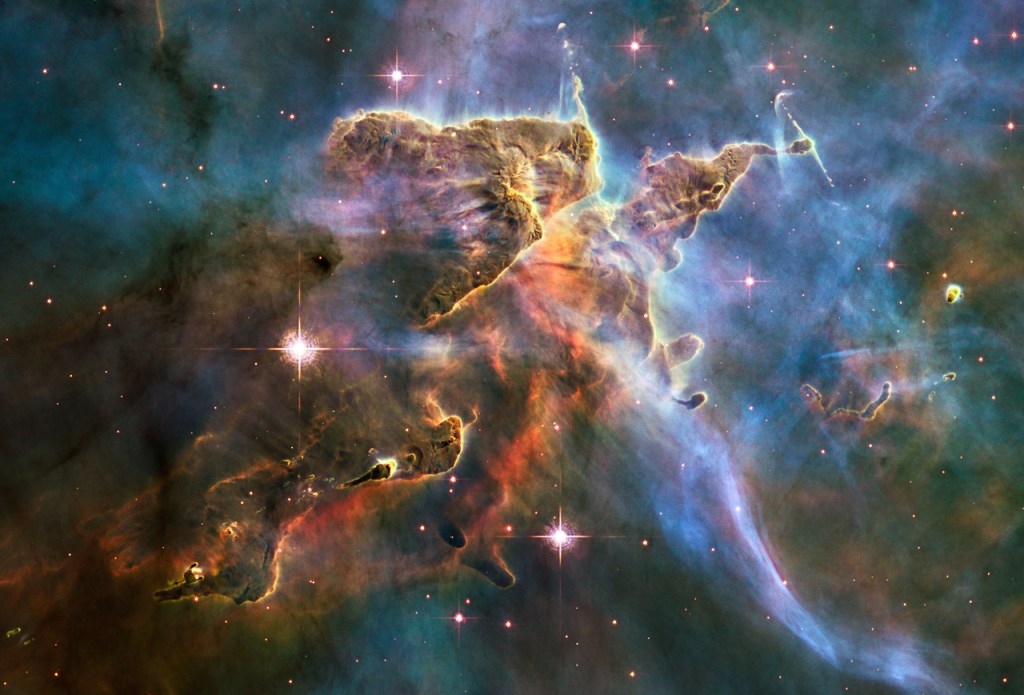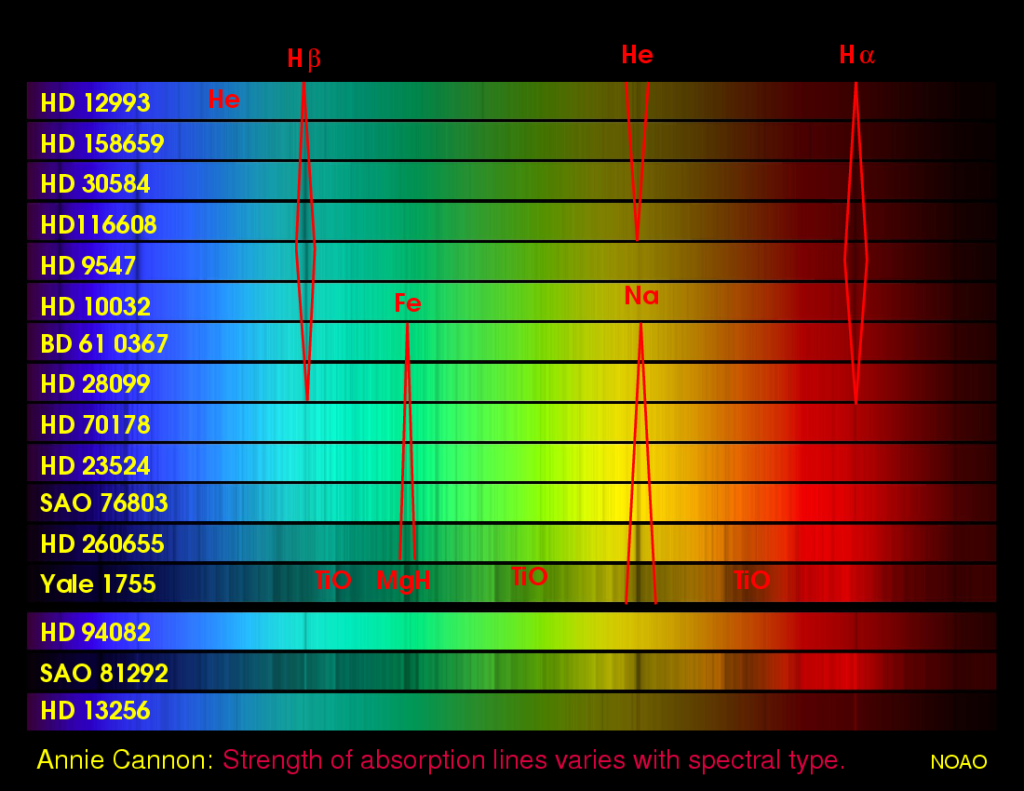absorption spectrum
-

Interstellar Spectra
I often refer to what we call the interstellar medium as the galaxy’s “backstage,” and I do that for a reason: for the most part, we can’t see it. The backstage of any theater isn’t part of the show. You, as…
-

Our Sun: The Chromosphere
This diagram is a tiny bit misleading. Here, it looks like the chromosphere is the visible surface of the sun, with the photosphere just below. Really, we never see the chromosphere. If you ever look through a solar telescope at…
-

Types of Stars
Meet the sun: a G2 class star towards the middle of its lifespan. Wait a second…G2? What does that even mean? It’s all part of a way astronomers break down the billions of stars in the sky and organize them…
-

The Atomic Spectrum
Astronomers know that if white light passes through a prism and is bent, it’s separated out into its component colors — the colors of the rainbow. Astronomers also know that when light interacts with atoms, the building blocks of the…

